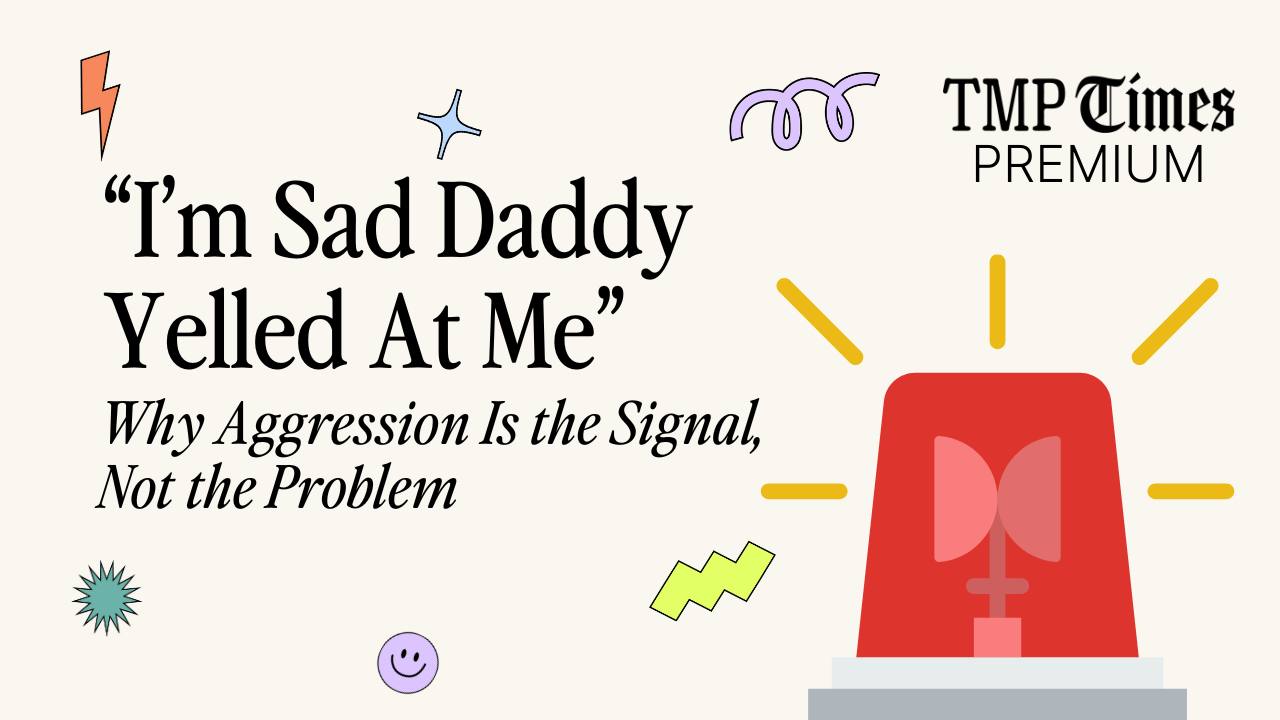The Best Intervention For Curbing Aggression


The best intervention for curbing aggressive behavior is not reading children’s books, teaching your child how to take deep breaths or even helping them communicate their feelings.
The best intervention combines all of these and believe it or not - it starts with removing the biggest distraction to modern day families - screens.
But first - let me make this clear: I’m not against screens. As a busy mom of 3 kids, my kids watch screens almost daily. I see the value and convenience.
But let’s be real- they take up a lot of our time. At least 30-60 minutes every day.
Screens are a huge distraction - which is fine when our child’s behavior is “on track.”
But if your child is 3 and up and regularly aggressive (behaviorally, verbally, or both) - We don’t have time for distractions and a passive approach.
As parents, we must be proactive and it starts with eliminating screen-time.
Not as a punishment, though.
This is what I tell me kids whenever I use this approach: “Your behavior is showing me we’re not on the right track as a family. Something is ‘off’ between us. We’re going to skip screen-time so we have more time together.”
Why does this work?
- It changes the environment sending a clear message to your child that you take aggressive behaviors seriously. This isn’t just something you ignore or hope goes away. You take direct action.
- It focuses on reconnection and teaching so that your child feels supported in learning how to get their needs met in healthier ways (if you implement it the way I recommend).
Aggression is not child problem or a parent problem.
Aggression is often a family problem.
And until the family system changes, the problem will persist.

Aggression is often the symptom of a larger issue. Eliminating distractions allows you space and opportunity to address the larger issue.
In this lesson, I’m going to discuss how to intentionally remove screen time short-term to help curb aggression, increase connection, and most importantly teach your child important life skills.
After reading this week's lesson, you'll learn:
- Why traditional screen removal doesn't work
- A Different Approach: The Reset & Reconnect Method
- Step-by-step how to create lasting change
- When to use this method (and when you shouldn’t)
- Important notes about timing (because if you mess this up, it won’t work)
- How to use this approach even when you have toddlers, multiple children to manage, or your child is shut down (and doesn’t want to talk)
- Printable resource: The Reset & Reconnect Method

Part 1: Why traditional screen removal doesn't work
As a graduate student, I was trained in a behavioral intervention called Parent-Child Interaction Therapy (PCIT). It’s an evidenced-based treatment for children ages 2-6 with behavioral issues like aggression and defiance.
Through live in-vivo parent coaching, I taught parents how to implement a time out or remove privileges whenever their child did not follow simple directions.
While effective in the short term, I realized after working with parents for years that there’s one big drawback to this approach - it doesn’t actively teach children essential skills like emotional regulation and communication.
Also - this intervention works great when kids are calm and we need them to follow simple directions (like “Please put on your shoes.”) but it’s not as effective for managing aggressive behaviors. In fact, this approach tends to make behavior worse.
Why? Oftentimes, aggressive behaviors involve a myriad of factors including:
- Emotional dysregulation
- Lagging skills (like communication, problem solving, empathy, etc)
- Reinforced (dysfunctional) parent-child patterns
So it’s nearly impossible to get cooperation when you tell a screaming child to “Pick up the blocks.” They’re dysregulated not “defiant” (as we discussed in this newsletter.)
Through my own research and experience, I realized this powerful intervention just needs to be coupled with other interventions and chefs kiss. 🤌🏽
So let me breakdown exactly how to create the perfect combination to help curb aggression, and most importantly - teach your child crucial life skills.
[🔓This article is for premium members. Not a premium member yet? Start your free 7-day trial now. ⤵]




